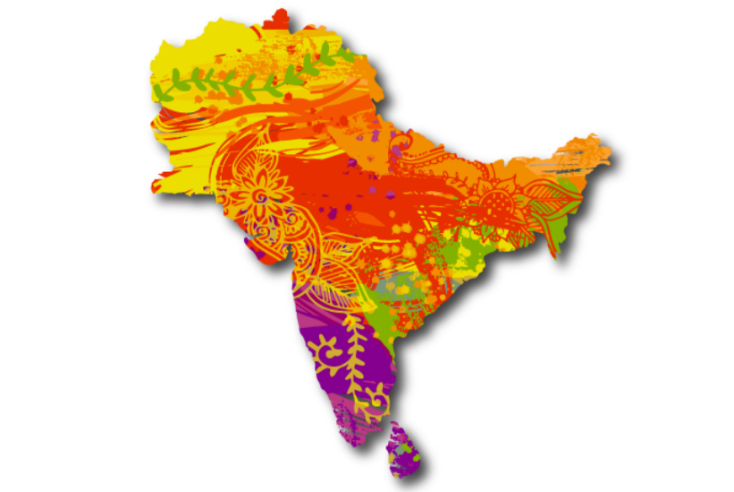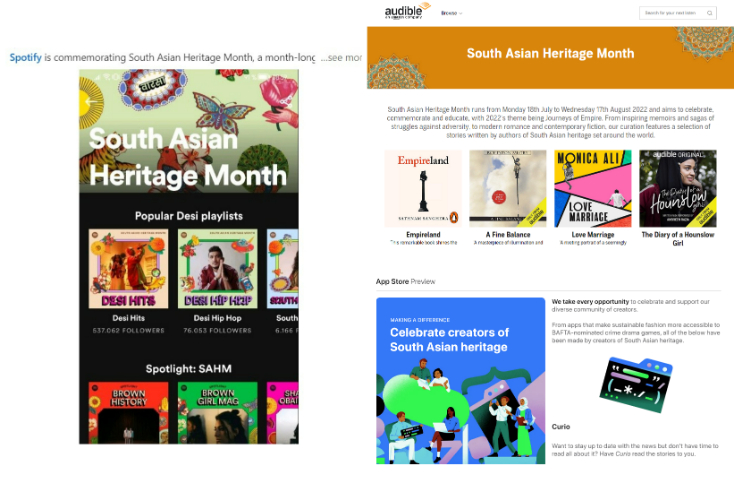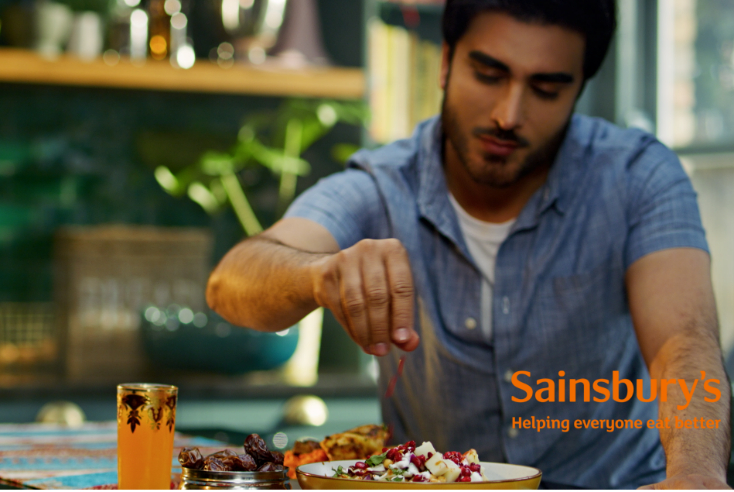Are brands missing a trick? South Asian Heritage Month three years on

Feature
Despite launching three years ago, some of the UK’s biggest Asian heritage media owners do not have South Asian Heritage Month on their radar.
Advertisers should treat South Asian Heritage Month as a “primer” for year-round campaigns and strategies to speak to the south Asian community.
That was the clear message from media owners and advertisers as the third annual SAHM came to a close yesterday: brands are ‘missing a trick’ by not advertising to the south Asian community all year-round. However, there was a range of opinions about what more can be done to reach them with their campaigns.
Specialist media owners Sunrise Radio and Zee TV UK appeared to be unaware of SAHM when contacted for interview by The Media Leader, suggesting the scheme is yet to reach all parts of its target audience.
Both companies reported they had not yet heard of, or engaged with, the nascent scheme, but are hopeful it will encourage advertisers to do more to reach one of the largest and most diverse communities in the UK.
Inspired by Black History Month, SAHM was founded by Dr Binita Kane and Jasvir Singh to commemorate, celebrate and educate around the experiences of the south Asian community in the UK. Eight countries are now included under the banner including: Afghanistan, Bangladesh, Bhutan, India, The Maldives, Nepal, Pakistan, and Sri Lanka.
How have brands been commemorating it?
Companies like Media For All and Bloom in Colour chaired livestreamed and internal events aligned with the initiative, while Channel 4 and the BBC carried documentaries and other commemorative content centred around the 75th anniversary of Indian Partition.
Spotify, Audible and Apple’s App Store also got in on the act with dedicated SAHM content on their platforms including podcasts, desi music, audiobooks and south Asian-owned business apps.

Javed Husain, chief growth director at agency MediaReach, recommended that brands use South Asian Heritage Month as a “primer”, similar to what certain brands do with International Women’s Day, Black History Month and Pride.
This was echoed by; Nikki Sehgal, general manager at Media For All (MEFA) and SAHM volunteer, Davina Rajoopillai, co-founder of We Are Badlands, Kay McCarthy, sales director, ad sales and sponsorship at Sunrise Radio and Parul Goel, territory head of UK and Europe for Zee Entertainment.
They all urged brands to not just advertise to the south Asian diaspora during Diwali, Ramadan or SAHM and then “disappear” for the rest of the year; an accusation that has often been levelled at advertisers with similar campaigns aimed at the LGBTQ+ and Black and Afro-Caribbean communities during Pride and Black History Month which run in June and October.
Rajoopillai suggested: “As marketers, we know that what we do as an industry and who we represent has a profound impact on culture, so when it comes to how South Asian Heritage Month should be treated in the future, why not be ahead of the curve and create work that speaks to us and reaches new audiences, as opposed to it just being an internal panel talk.”
She said brands should steer away from “tokenism” and instead create strategies that will help elevate talent and give back to the community. Specifically, agencies should learn from the disservice to and backlash from the Black and LGBTQIA+ communities from past campaigns including the Marks & Spencer’s marketing “faux pas” with a different take on the classic BLT sandwich, and “hollow” Twitter posts in support of Black Lives Matters from Amazon, Disney and L’Oréal.
Jasvir Singh, co-founder of SAHM summed up what many in the community and the media industry conveyed to The Media Leader: “South Asian representation goes beyond just South Asian Heritage Month. It should be all year round, not just for one month. But if it takes a month long focus to change that, then so be it.”
Ramadan and Diwali just ‘a drop in the ocean’
Some brands are already implementing strategies with regards to Ramadan and Diwali, which are celebrated in Spring and Winter respectively by different religious and cultural communities around the world.
MediaReach’s Husain revealed the agency has been working with supermarket chain Sainsbury’s to launch summer and winter campaigns aimed at the South Asian community in the UK with “springboard” Ramadan and Diwali campaigns building up reach and resonance within the south Asian target audience preceding wider activities.
For the Ramadan and subsequent summer campaign, MediaReach worked with Bollywood actor Imran Abbas (pictured, below), a Pakistani actor with a social media following of seven million.

The plan is to follow a similar strategy for its Diwali and winter commercial for the south Asian market which is set to include a British Asian influencer and Masterchef finalist.
Husain said these campaigns were careful to not always market specific “ethnic” cuisine to its target audience, instead focussing on summer barbecue ingredients or warming winter soups and stews to make sure it did not focus too heavily on only one aspect of south Asian life.
He said the key point to make the business case for this kind of “always on” strategy with seasonal peaks was that supermarket sales during Ramadan register the second highest levels after Christmas in the UK.
“When you go to Diwali or Ramadan time, your media cost is expensive, and there are more advertisers at that given time, but if you look at some brands’ consumption, it is two or three times higher,” he added.
“Tesco has the biggest Ramadan sales. Sainsbury’s are realising that they are behind Morrison’s and Asda, so you see those who haven’t taken action on that are realising that this is a big chunk and because Ramadan runs for six weeks, it’s a lot of consumption.”
South Asian representation both on and off screen
However, it is not just about mainstream advertisers marketing more directly to British south Asians throughout the year or during specific calendar events, but also south Asian representation on and off-screen.
Sehgal and Husain stressed the importance of having people from diverse backgrounds involved in the planning, production and decision-making stages of a campaign to ensure the campaign is authentic and representative in its creative and media strategy.
The latest IPA agency census showed while the percentage of employees from non-white backgrounds across agencies had gone up year-on-year from 15.3% in 2020 to 18.3% in 2021, the proportion of individuals from non-white backgrounds at c-suite level roles was only at 6.4% in 2021, less than half of IPA’s 15% target.
Singh, the co-founder of SAHM, maintained representation in front of the camera in advertising campaigns was “key” to ensuring people “feel more seen”.
He gave the example of a young Sikh boy in a patka (pictured, below) showing how to make advertising “more inclusive” and giving him “hope for the future” as it coincided with SAHM celebrations.
Singh affirmed: “South Asians are often overlooked in media and advertising, so anything which can improve on that can only be a bonus.”
Four-year-old Sikh model wins hearts on social media https://t.co/KO4HPhTGVJ
— BBC News (UK) (@BBCNews) August 16, 2022
Husain noted this kind of representation has to be done carefully and authentically to make sure you have the right person for the right audience as different countries, religions and ethnic groups in the diaspora will respond in different ways to the talent, so the casting, tone and balance has to be right.
If those in the media and advertising do not currently have the resources or do not know where to go to access south Asian talent, Rajoopillai recommended a recently created directory called WTB101, The What Is This Behaviour? 101, an annual, growing resource of one hundred and one South Asian creatives across the globe.
Not all south Asians are the same and do ‘normal things’ too
Some advertisers may be “hesitant” around advertising to such a broad community in case they “get it wrong”.
Sehgal made the point that south Asian communities are “not a monolith” and it is important to recognise there are diverse interests and behaviours under this umbrella which brands can look to which are very similar, if not the same, as hobbies and patterns across the wider population.
She explained: “I think South Asian Heritage Month is actually almost putting alarm bells out there. South Asians are a community that brands should be communicating to, because they exist to do normal things.
“We’re talking about brands; sports, drinks, food, all of that, we do normal things and you don’t have to target us in a way that almost holds our ethnicity or race as a badge. You can literally communicate to us doing these little things because you’ve got people that are born and bred here and this British culture is intrinsic to their makeup.”
Sehgal stressed households with south Asian heritage in the UK and beyond are not solely interested in curry or Bollywood, although this tends to be a significant part of their culture, but interests from music to sport to technology and more equally apply which can open a door to brands to “start a conversation”.
However, brands can still be unsure how to market “typical products” to this audience. Rajoopillai cited an example of an alcohol brand being worried about targeting south Asians for fear of causing offence (a proportion of the community are teetotal for religious and cultural reasons).
But she reassured those brands that there are large segments of the south Asian population where alcohol is a part of socialising and family affairs with whiskey in particular being “a drink of choice” at her family gatherings, which could be gathered from research or having a diverse team involved in the campaign.
“We know that the South Asian diaspora, which accounts for 6.9% of British society, is a significant percentage (and is sure to be larger given the latest census), but despite this, 29% of businesses do not target the community at all, and of the 47% who do, many fail to be effective in their approaches as they group the whole community under one set of characteristics,” Rajoopillai says.
“Instead, marketers should look to better understand South Asian consumers on a more nuanced level – from their purchasing behaviours to their wants and needs. I think there are two key elements to understanding the British South Asian diaspora; understanding their nuances and socioeconomic differences and understanding their bicultural and multicultural identities. Of course, this starts with our histories and journeys to the UK.”
Meanwhile, a third of south Asian-run businesses are owned by women and at least 57% of these have a female director, Rajoopillai noted. So it is crucial for marketers to recognise this group of successful south Asian women as there has previously been “a distinct lack” of this particular representation in advertising to date.
Misconceptions and stereotypes undoubtedly still exist around the south Asian community, one being that it is “not sexy, stylish or creative”, which Rajoopillai absolutely rejects, pointing to a rising number of South Asian-run platforms with large followings such as Dialled In and Diet Paratha which centre on music, fashion and culture trends.
Brands need to ‘wake up’ to specialist media
Sunrise Radio’s McCarthy expressed similar sentiments about not solely marketing “ethnic” products to the south Asian community, giving an example of the specialist station’s listeners also buying “normal things” like toilet paper like any other family would, but also stressed the importance of using specialist media that is specific to this community.
McCarthy remarked: “People that are out in the wider community will come across advertising, but it really hits home when it’s in a media that is specific to them, that they trust, and Sunrise has grown up with the Asian community. We are an integral part of the Asian community and I really think unless brands and services wake up to the cultural diversity, they are going to lose out. They are missing an opportunity to increase their business at a marginal media on-cost.”
In the last Rajar release, Sunrise retained its spot as market leader in London with a weekly reach of 188,000 and nationally had a weekly reach of 376,000, second only to the BBC Asian Network in this space.
McCarthy stated big brands “really, really need to wake up” to this as everyone in UK society at the moment wants a better deal or service, no matter what cultural group, especially as the cost-of-living crisis is set to deepen.
She also called past diversity pledges from the major multiples following the Black Lives Matter movement of 2020 mostly “all talk but no action”, saying Sunrise Radio as an established specialist media owner had not seen any major increase in spend or mainstream advertisers coming back on since that time, apart from Tesco who will be launching a campaign in Q4 of this year.
McCarthy emphasised brands had “no excuses” for not advertising on specialist media channels like Sunrise as “it is not much money”, is normally available through widely-used media buying mechanisms like JET, and the vast majority of the station’s content is in English rather than Hindi or another dialect, so would not even require an advertiser to change the language of a spot.
Zee TV’s Goel echoed this argument in favour of advertising through specialist media to reach this audience, affirming the brand had a “100% penetration” of the south Asian community in the UK through its TV offering on Sky and Virgin Media, as well as its Netflix-style app, Zee 5, which has a premium ad-free and cheaper ad-supported tier, along with thousands of hours of content, millions of monthly views and more than a million downloads.
There is content on there for all different generations of a south Asian family, he said, from thrillers to classic Bollywood films and series and urged advertisers to come speak to Zee TV and other specialist media owners directly for help in better understanding the community’s likes and dislikes if they were unsure of how to engage with the community in a campaign.
He said mainstream advertisers should not be afraid of marketing different things to this audience, suggesting running Christmas adverts in Hindi as a lot of the community will celebrate both south Asian and British events in their calendar.
He concluded: “We have the means, we have the medium, we have the audiences for the mainstream advertisers.”



